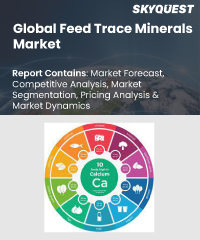
Product ID: SQMIG30C2139

Report ID:
SQMIG30C2139 |
Region:
Global |
Published Date: February, 2024
Pages:
261
|
Tables:
69 |
Figures:
75
Feed Trace Minerals Market size was valued at USD 446.6 million in 2019 and is poised to grow from USD 473 million in 2023 to USD 610 million by 2031, growing at a CAGR of 5.8% in the forecast period (2024-2031).
The market for trace minerals has been expanding as a result of several factors, including, but not limited to, an increase in the production of compound feed, an increase in the demand for animal protein in the human diet, and the growing importance of animal nutrition in the production of livestock. According to FAO by 2031, the demand for food will have grown more than 60%, while the demand for animal protein will grow steadily each year. Also, the output of meat, aquaculture, and dairy products is likely to grow. The demand for poultry and red meat has been going up globally, which has helped the feed trace mineral market grow.
US Feed Trace Minerals Market is poised to grow at a sustainable CAGR for the next forecast year.
Our industry expert will work with you to provide you with customized data in a short amount of time.
REQUEST FREE CUSTOMIZATIONFeed Trace Minerals Market size was valued at USD 446.6 million in 2019 and is poised to grow from USD 473 million in 2023 to USD 610 million by 2031, growing at a CAGR of 5.8% in the forecast period (2024-2031).
Want to customize this report? This report can be personalized according to your needs. Our analysts and industry experts will work directly with you to understand your requirements and provide you with customized data in a short amount of time. We offer $1000 worth of FREE customization at the time of purchase.

Product ID: SQMIG30C2139